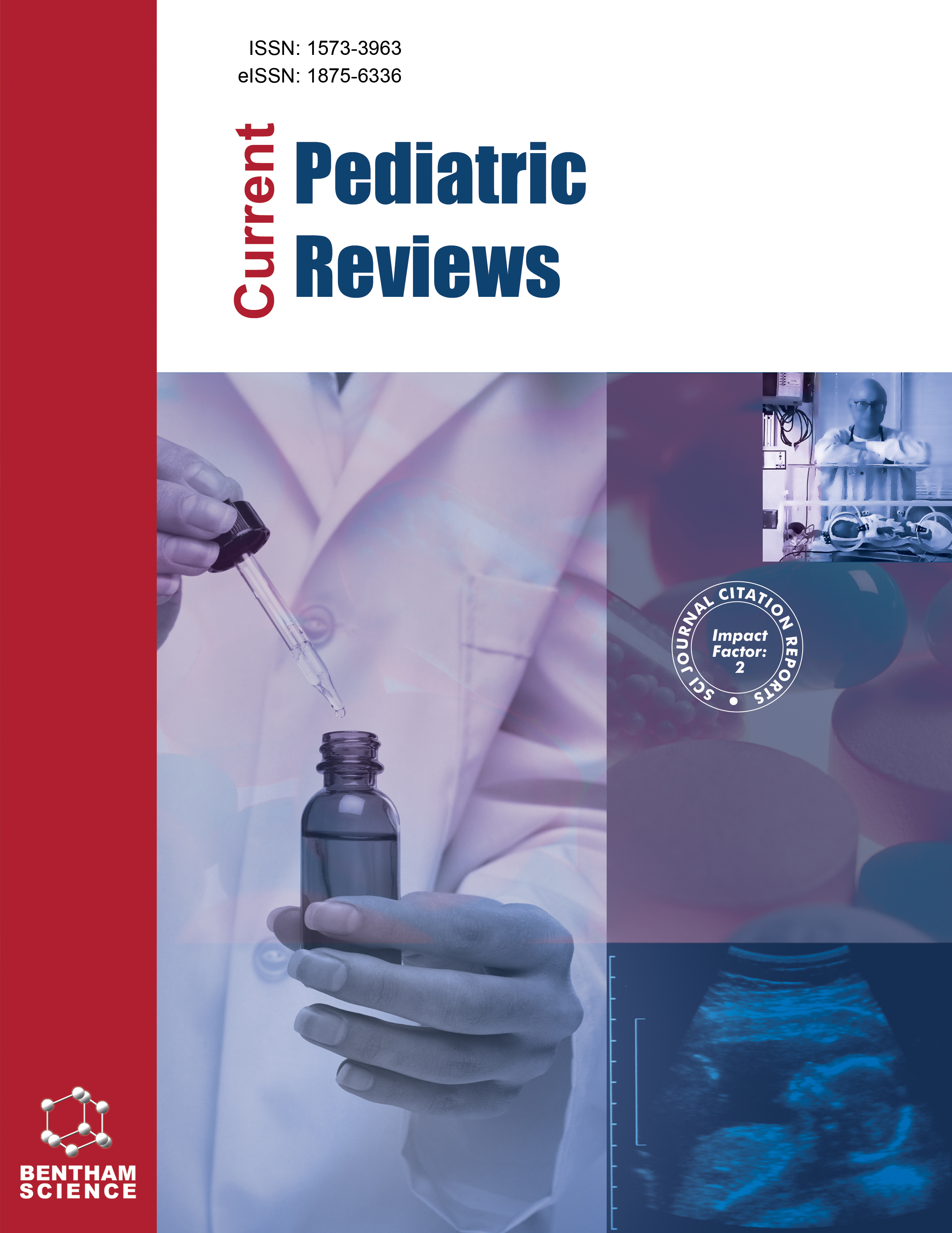- Home
- A-Z Publications
- Current Pediatric Reviews
- Previous Issues
- Volume 2, Issue 2, 2006
Current Pediatric Reviews - Volume 2, Issue 2, 2006
Volume 2, Issue 2, 2006
-
-
Cystic Fibrosis Gene Therapy: Key Questions and Prospects
More LessAuthors: Isabelle Fajac, Stephanie Grosse, Annie-Claude Roche and Michel MonsignyCystic fibrosis is a monogenic disorder with significant morbidity and mortality, despite advances in conventional treatment. It is a good candidate for gene therapy and this field has progressed rapidly since the cystic fibrosis transmembrane conductance regulator gene was cloned. We will review the specific questions to address for successful cystic fibrosis gene therapy, such as the extra- and intracellular barriers to airwa Read More
-
-
-
Not Just any Fat for Cystic Fibrosis? Docosahexaenoic Acid in Cystic Fibrosis
More LessOnce the genetic defect of cystic fibrosis (CF), the most common autosomal recessive disease, was discovered, there was hope for quick positive results with gene-therapy. These did not came true, however. Recent CF mice studies by Freedman et al. demonstrated a disease reversal by high doses of docosahexaenoic acid (DHA). Although it is known for long that the same essential fatty acid imbalance with low levels of DHA i Read More
-
-
-
Specific Nutritional Needs for Children: Are Children Small Adults?
More LessAuthors: Yvan Vandenplas, Bruno Hauser and Jean D. SchepperNutrition is age specific, in all aspects. The intake of young children depends on their caretakers. It is obvious that growth and development cause major changes in children. However, these changes not only consider size but also body composition and maturation of many (digestive) functions. Energy and nutrient requirements do not only depend on intake, but also on expenditure. The latter depends on many variables such as Read More
-
-
-
Severe Meningococcal Infections in Children and Adolescents
More LessAuthors: Alan Graham and Brahm GoldsteinInfection with Neisseria meningitidis remains one of the most devastating illnesses in pediatrics. Affected patients can progress from a mild viral-like illness to death within a matter of hours. Additionally, the definitive clinical diagnosis cannot be reached until the characteristic petechial rash appears, making differentiating meningococcal infection from a benign viral illness impossible. This review will discuss the epidemiology, Read More
-
-
-
Cellular Mechanisms in Perinatal Hypoxic-Ischemic Brain Injury
More LessHypoxia-ischemia is responsible for a high morbidity and mortality rate, both in infant and adult patients. In humans, the brain is immature from fetal to postnatal life, demonstrating more specific vulnerability than the adult one, induced by exposure at perinatal asphyxia. The extension and distribution of brain lesions depend to a large extent on the intensity and exposure to injury, the maturational stage, the affected brain r Read More
-
-
-
Evaluating a Child with Partial Developmental Delay (ParDD), Global Developmental Delay (GDD)/Mental Retardation (MR): Clinical Expertise Based or Evidence-Based?
More LessAuthors: Virginia C.N. Wong and Brian H.Y. ChungDevelopmental delay (DD) is a commonly encountered clinical problem. Nearly most children with neurodevelopmental disorders present with developmental delay. The ultimate diagnosis may take months or even years to be confirmed. The final verdict may be purely developmental with a benign outcome, or there might be slow deterioration ending up in a more sinister cause like neurodegenerative diseases. At times, the Read More
-
-
-
Update on the Treatment of Childhood Asthma
More LessBy H. W. KellyThe prevalence of asthma in children continues to increase in many parts of the world, with the highest increases in industrialized urban societies. Although the exact cause of the increase remains undefined the "hygiene hypothesis" where lower exposures to infectious agents that stimulate the production of Th1 lymphocytes thus allowing proliferation of Th2 lymphocytes that mediate allergic diseases has gained popularity. A Read More
-
-
-
Childhood Systemic Lupus Erythematosus: New and Old Treatments
More LessAuthors: Brigitte Bader-Meunier and Elie HaddadSystemic lupus erythematosus (SLE) is more severe in children than in adults, and often needs aggressive treatment. Classical (old ) therapies include mostly non-steroid anti-inflammatory drugs, hydroxychloroquine, corticosterois and cyclophosphamide. However, these two latter drugs can induce severe side effects. Recently, new drugs, especially Mycophenolate Mofetyl and anti-CD20 antibody, have been proved to be Read More
-
-
-
Primary Vesicoureteric Reflux and Reflux Nephropathy - New Insights
More LessAuthors: Laura Santoro, Alessandra Ferrarini, Laura Crosazzo and Mario G. BianchettiPrimary vesicoureteric reflux was felt to result from a congenitally short mucosal tunnel length with oblique intravescical insertion but more recent data suggest that primary vesicoureteric reflux is often associated with functional urodynamic abnormalities. There is now sound evidence that primary vesicoureteric reflux has a familial basis; most findings suggest a dominant inheritance with incomplete penetrance. Primary ve Read More
-
-
-
Recent Advances in Minimal Access Surgery for Infants and Children
More LessAuthors: Ken K.Y. Wong and Paul K.H. TamPaediatric surgeons were among the pioneers of laparoscopic surgery in the early 1970s. However, the vast potential of minimal access surgery in infants and children has only been more fully realised in the past decade. This has been brought about by increasing experience in paediatric laparoscopic procedures, and advances in video technology and miniaturised instruments. Very few complex paediatric surgical conditio Read More
-
Volumes & issues
-
Volume 21 (2025)
-
Volume 20 (2024)
-
Volume 19 (2023)
-
Volume 18 (2022)
-
Volume 17 (2021)
-
Volume 16 (2020)
-
Volume 15 (2019)
-
Volume 14 (2018)
-
Volume 13 (2017)
-
Volume 12 (2016)
-
Volume 11 (2015)
-
Volume 10 (2014)
-
Volume 9 (2013)
-
Volume 8 (2012)
-
Volume 7 (2011)
-
Volume 6 (2010)
-
Volume 5 (2009)
-
Volume 4 (2008)
-
Volume 3 (2007)
-
Volume 2 (2006)
-
Volume 1 (2005)
Most Read This Month
Article
content/journals/cpr
Journal
10
5
false
en


